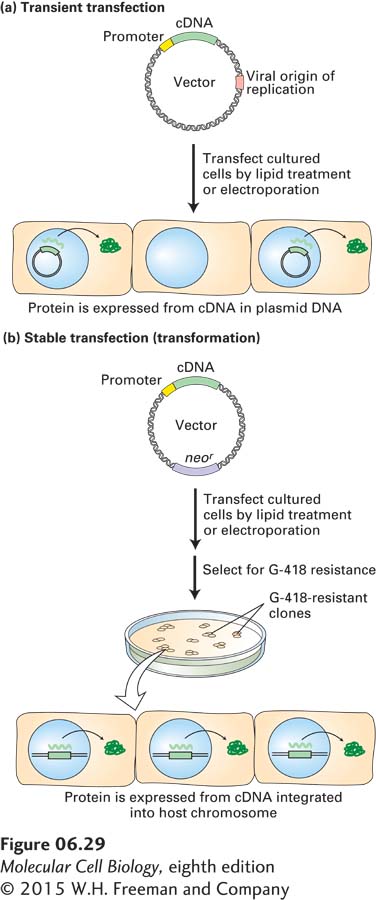
EXPERIMENTAL FIGURE 6- 29 Transient and stable transfection with specially designed plasmid vectors permits expression of cloned genes in cultured animal cells. Both methods employ plasmid vectors that contain the usual elements— replication origin, selectable marker (e.g., ampr), and polylinker— that permit propagation in E. coli as well as a cloned cDNA with an adjacent animal promoter. For simplicity, these elements are not depicted. (a) In transient transfection, the plasmid vector contains a replication origin from a virus that can replicate in the cultured animal cells. Since the vector is not incorporated into the genome of the cultured cells, production of the cDNA- encoded protein continues for only a limited time. (b) In stable transfection, the vector carries a selectable marker such as neor, which confers resistance to G- 418. The relatively few transfected animal cells that integrate the exogenous DNA into their genomes are selected on medium containing G- 418. Because the vector is integrated into the genome, these stably transfected, or transformed, cells will continue to produce the cDNA- encoded protein as long as the culture is maintained. See the text for discussion.
[Leave] [Close]